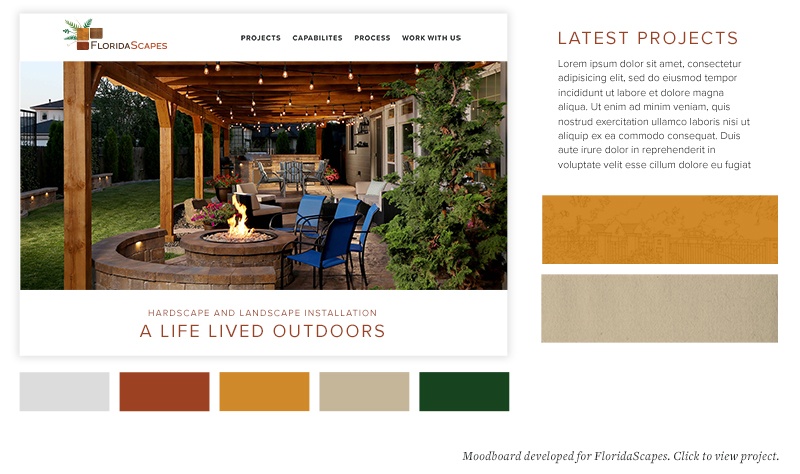With an educational background in Industrial Design, Cat brings a little bit of everything to the team as PHOS’ first Creative Associate. She delivers research and user-based results, whether that be in a new branding campaign or your next photoshoot.
July 23, 2018
Branding: One Decision That Decides A Thousand
When most people talk about ‘branding,’ they instantly think logos. But a brand is so much more than that!
A strong brand is meaningful, memorable, and coherent. It is planned with purpose. It encompasses both a visual and verbal identity that ultimately drives how a business outwardly presents itself and internally achieves its mission. It is consistent communication. And it is the first step in developing crucial customer touchpoints.
Think of branding as a Lego set. A logo by itself is one piece. We can see it, recognize it, but there isn’t any story. When you approach branding as a strategic process, you can see the entire plan instead of the pieces.
When the research directs moodboard development and messaging, which in turn becomes the basis for your logo, then web design, then collateral, there is strong cohesion that amplifies your story.
Getting this first step right sets you up for success and your branding decision will continue to ripple across every aspect of your company.
Strategic Branding
To have a thoughtful brand, you need to dedicate time to researching and analyzing the goals of your business. What does your business do? How does your team carry out your mission with excellence? And most importantly, why does your company exist?
These answers shape what your brand speaks to. For example, a pediatrician and dermatologist are both doctors, but the basic “what they do” lend themselves to two very different brand identities because they speak to different audiences.
Your visual identity needs to communicate the full story; i.e. the overall industry in which you compete, how you stand out in the crowd, your company’s internal values, and audience.
There’s a lot that needs to be communicated in such a condensed form, but dedicating time and resources to branding will ultimately create a robust and cohesive brand story.
The Visual Components of a Brand
With your ‘why’ in hand, what actually makes up the visual identity of a brand? These are things you can pull into a moodboard to convey a particular style or concept. They include:
- Color palettes
- Typography
- Illustrations
- Textures
- Photography
These elements work together to create harmony amongst your logo, website, and any other collateral pieces.
The “what”, “why”, “how” from the research phase act as guideposts to the moodboard development. Any elements that are added to the moodboard must answer to those questions to accurately establish the style of a brand.

The moodboard should act as a style summary to succinctly direct the subsequent messaging and logo development stages.
Messaging Strategy
Your messaging strategy is the set of guidelines that hone how the company speaks about itself.
Is your tone playful and relaxed? Do you speak with authority?
Imagine if a high-end manufacturing company known for its industry-leading technologies suddenly started using slang in their social media posts. It would weaken the brand’s image with such discrepancy.
As much as a logo is instantly recognizable, your messaging should always sound like it’s coming from the same voice.
Growth and Authority in Consistency
Consistency strengthens a brand’s authority. When a brand is consistent, it communicates that a company knows who it is.
You’ve already created a healthy, brand ecosystem when you strategically made your branding decision. The verbal and visual identities are now working together to tell the same story. But to ensure your brand keeps growing, it’s going to take company engagement for success.
Implement intelligent brand style guides to guide your team and empower them to make strong, consistent impressions every time. The more consistent you are with branding, the more full your brand story becomes. Branding is not a logo that lives only on business cards, it’s a toolkit to propel your business forward.
Messaging and Branding Style Guides
Style guides should always answer “Is this on brand?”. With style guides, your team can accurately apply brand assets and keep your visual and verbal identities consistent and recognizable.
Logo Package
This is the complete set of every file format, color options, and orientation styles that are approved. Too often, companies will use multiple variances of a logo, weakening the brand as customers’ expectations are confused.
Collateral
Collateral is marketing material that supports your business. This can include business cards, letterhead, brochures, and trade show booths. Without thinking of collateral as part of the brand story, it can be easy to produce an inconsistent representation of your brand.
Website
Second in visibility only to your logo, your website is another way your brand lives. A website is usually the archetype of all your brand elements working together- it’ll use established photography or illustrations, approved messaging, and of course, your logo. Getting to this point would not have been possible without making that first branding decision.
Making Your Brand Further Your Company
Strong branding empowers your company by giving it focus and direction. All those decisions made along the branding process shape how your company is perceived internally and externally.
Dedicate the time to do branding correctly and take control of your story.







